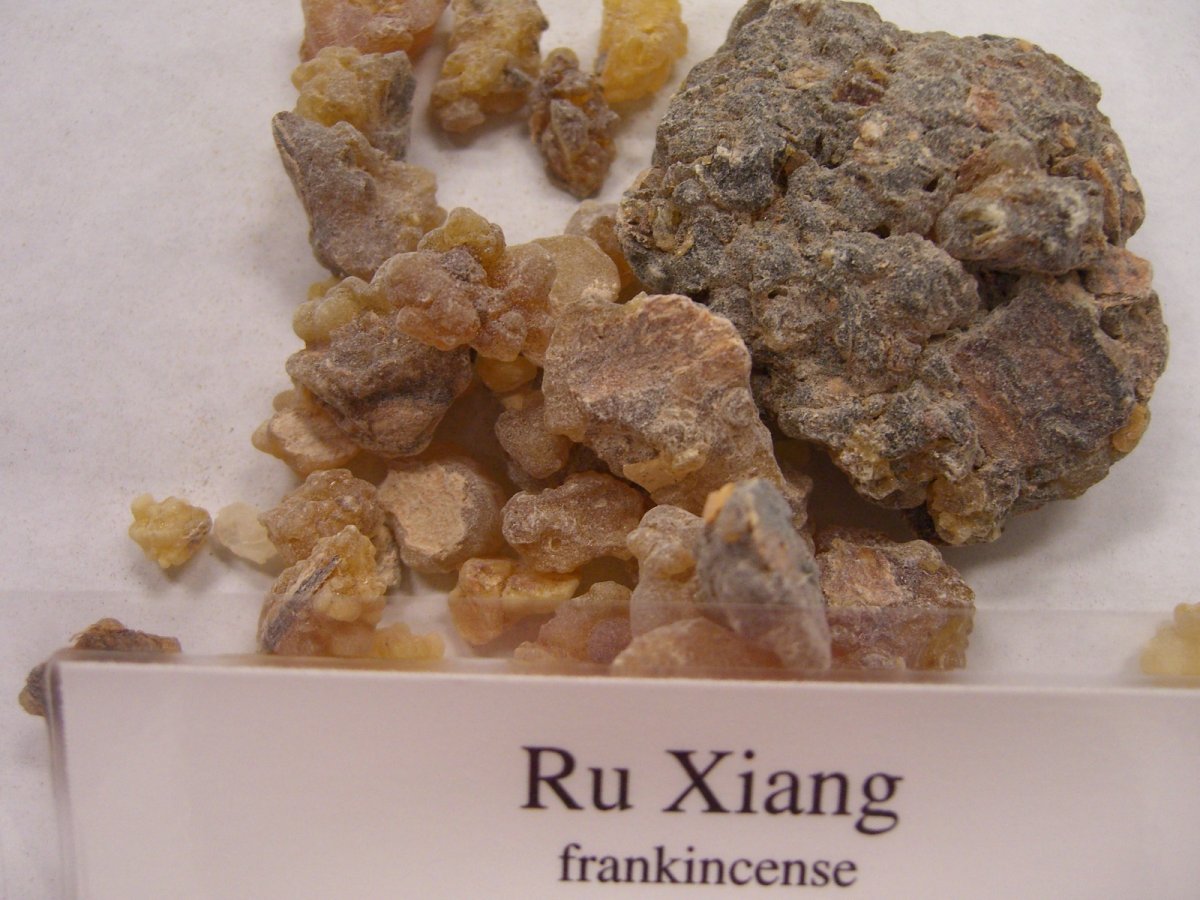Ru Xiang

  | Ru Xiang in TCM:Explore the properties of Ru Xiang according to Chinese
Nutrition and Traditional Chinese Medicine (TCM):
Factoids:
English Name: mastic, frankincense, olibanum
Pharmacuetical Name: Gummi Olibanum
Properties: acrid, bitter, warm
Temperature: warm
Channels: SP, HT, LV
Flavors: bitter, pungent
Special Properties:
circulates qi, circulates blood, reduces swelling
Actions / Indications:
- Invigorates blood, promotes qi movement, relieves pain; relaxes
sinews (chest, stomach, epigastric and abdominal pain due to
qi and blood stagnation; pain and swelling due to trauma; amenorrhea
or dysmenorrhea due to blood stasis)
- Reduces swelling; promotes flesh generation (skin
lesions, ulcerations, use topically as an ointment or powder for chronic
non-healing sores, carbuncles, bi syndrome, trauma. Take internally
for early stage carbuncles, sores, swelling, boils, intestinal and breast
abcesses)
- (cc: pregnancy)
- (cc: SP deficiency)
Special Notes:
- Compare Ru Xiang to Mo Yao, which has a very
similar function. Ru Xiang is stronger to relax tendons and is often
used to treat bi syndrome.
Disclaimer: In accordance with our terms of service, by using this web site you agree that none of the information found on this web site constitutes medical advice. You should always consult your doctor before trying any particular food or herbal remedy to treat disease.
Folk remedies presented on this site are designed to address specifc TCM diagnoses, and are not one-size-fits-all. If you would like to learn more about Traditional Chinese Medicine (TCM) and how it relates to Chinese Nutrition, you can book in a free call with a licensed professional. There is no obligation to purchase.
[CLICK HERE for your free INITIAL CONSULTATION] |

